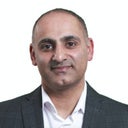Thank you for your question and the photographs.The pictures do not show much difference and I think your hair quality and thickness is such that you do not need to start any medication currently. For your age, you have a full head of hair and it is quite dense. It doesn't look like it is thinning. Has your hairline always been like this or have you noticed it has reduced as you have gotten older.Finasteride and minoxidil are the only 2 products available that have been clinically proven to regrow hair. All others (herbal supplements/ caffeine-based/ nutritional) slow down hair loss but do not promote hair growthWith finasteride - its effect is to prevent testosterone converting to DHT therefore it allows follicles to regain the preshrink size. 1 clinical trial did not show any difference between a topical or oral route to its use. It is usually used for 3-6 months and the balding process will resume 6-12 months after stopping the treatment. The risk of decreased libido and erectile dysfunction is less than 1 in 10 and occasionally this can be permanent. Minoxidil is another alternative that has a positive effect on hair growth stimulation. This is thought to be through activating potassium channels. It is applied topically on a daily basis and needs to be used for atleast 3 months before effects are noted. If stopped, any new hair that regrows will fall out 2 months after the treatment is stopped. The side effects profile here is less than with finasteride.Other things that you can do to improve your hair growth: nutritional optimising- 1. proteins; especially sulphur containing amino acids - cysteine and methionine - these are precursor to keratin hair growth; lysine - this is mainly an inner part pf the hair root and is responsible for shape and volume. 2. carbohydrates with a low glycaemic index 3. fibre which regulates the carbohydrate-fat metabolism which is important for hair growth 4. vitamins: C, A and group B vitamins5. minerals: zinc/ iron/ copper/ selenium/ magnesium/ calciumYou should avoid high fats, fried foods and hydrogenated oils - monounsaturated fats and saturated fats are linked to increased testosterone production which can increase the conversion to DHT which results in more hair loss.There are several scientifically validated botanical treatments available also - capsaicin/isoflavine/ soy/ ginseng/ saw palmetto. Therefore making sure you have a balanced diet with all these components will definitely help. Additional treatment options are Platelet Rich Plasma that can aid in thickening the hair by providing growth factors tot he follicles and improving the blood supply. Laser treatments have shown some promising results either alone in certain patients or in combination with hair transplant patients.It is too early for a hair transplant for you at the moment and theses are some of the things you could try. I hope this is of help to youBWRohit Seth Plastic, reconstructive, aesthetic and hair transplant surgery


